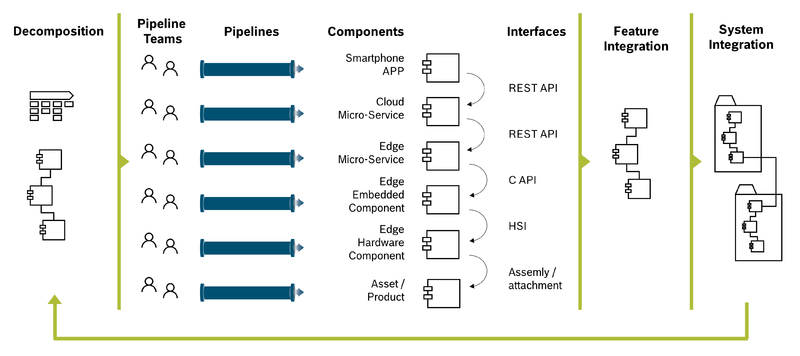AIoT Implementation Viewpoint: Difference between revisions
| Line 26: | Line 26: | ||
== <span id="Asset"></span>Asset Integration == | == <span id="Asset"></span>Asset Integration == | ||
The Asset Integration perspective should provide an overview of the physical parts of the product, including sensors, antennas, battery / power supply, HMI, and on-board computer. The focus is how these different elements are integrated with the asset itself. For example, where exactly on the asset would the antenna be located, where to position | The Asset Integration perspective should provide an overview of the physical parts of the product, including sensors, antennas, battery / power supply, HMI, and on-board computer. The focus is how these different elements are integrated with the asset itself. For example, where exactly on the asset would the antenna be located, where to position key elements like main board, battery, sensors, etc. Finally, an important question will be regarding the wiring for power supply, as well as access to local bus systems. | ||
[[File:2.3-iv-AssetIntegration.png|700px|frameless|center|Asset Integration]] | [[File:2.3-iv-AssetIntegration.png|700px|frameless|center|Asset Integration]] | ||
Revision as of 22:40, 9 July 2021

Implementation Viewpoint
The Implementation Viewpoint must provide sufficient detail to have meaningful technical discussions between the different technical stakeholders of the product team. However, most design artifacts in this viewpoint will still be on a level of abstraction which will hide many of the different details required by the implementation teams. Still, it is important to find a common language and understanding between the different stakeholders, including a realistic mapping to the Data / Functional Viewpoint.
The AIoT Implementation Viewpoint should at least include an End-to-End Architecture, details on the planned integration with the physical asset (either following a line-fit or retrofit approach), as well as high-level hardware, software and AI architectures.
End-to-End Architecture
The End-to-End Architecture should include the integration of the physical asset, as well as the integration of existing enterprise applications in the backend. In between, an AIoT system will usually have edge and cloud or on-premise backend components. These should also be be described with some level of detail, including technical platforms, middleware, AI and Digital Twin components, and finally the business logic itself.
Asset Integration
The Asset Integration perspective should provide an overview of the physical parts of the product, including sensors, antennas, battery / power supply, HMI, and on-board computer. The focus is how these different elements are integrated with the asset itself. For example, where exactly on the asset would the antenna be located, where to position key elements like main board, battery, sensors, etc. Finally, an important question will be regarding the wiring for power supply, as well as access to local bus systems.
Hardware Architecture
Depending on the requirements of the AIoT system, custom hardware development can be an important success factor. The complexity of custom hardware design and development should not be underestimated. From the hardware design point of view, a key artefact is usually the schematic design of the required PCBs (Printed Circuit Boards).
An key issue with custom hardware is to secure the supply side - either manufacturing the hardware internally, or finding a suitable manufacturer. For smart, connected solutions w, mass manufacturing is typically not as much an issue, because of the smaller volumes typically required. In this case, the required hardware can be produced in a smaller lab.
Software Architecture
AI Pipeline Architecture
The AI Pipeline Architecture should explain on a technical level how data preparation, model training and deployment of AI models are supported.






